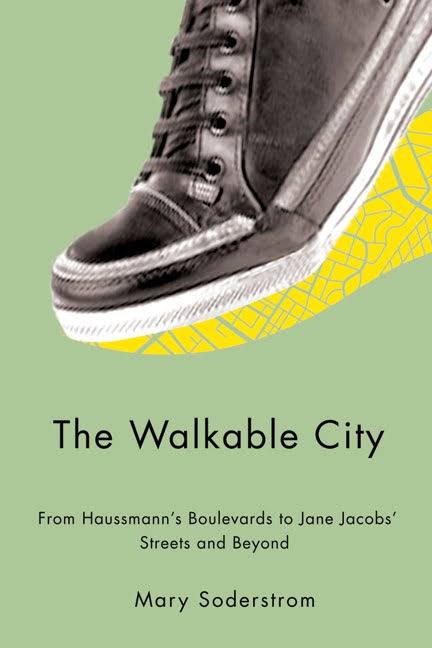
“…the walkable city, the oldest kind of city, is going to be the key to whatever success we have in meeting the challenges of the future.”
From The Walkable City, by Mary Soderstrom
Interview with Montréal based author Mary Soderstrom on ‘The Walkable City: From Haussmann’s Boulevards to Jane Jacobs’ Streets and Beyond‘
‘The Walkable City‘ covers quite a bit of territory- geographically (and in other respects). Can you share a bit of reflection about the travel you did for the research of this book?
It’s been a long time since I looked at the book, and I found it very interesting to dip into it again. One of the most striking things is how little I’d change it, particularly when it comes to its basic message about the importance of walkable cities to both agreeable living and to climate change. That said, I had forgotten all the places I mentioned in the book. Some of the travel was done for other projects, but I remember spending a lot of time in the 13ième arrondissement in Paris, looking at what happened after Haussmann in order to compare it with the inner arrondissements, which would have been razed, you’ll remember if LeCorbusier had had his way.
Even though Toronto isn’t that far away, I hadn’t looked at the city carefully until I started work on the book. (A bit of trivia: Jane Jacobs lived only a few doors away from the woman from whom we rented an apartment in Paris several times. When I took a photo of the Jacobs’ house, she came out to ask what I was doing, and it was only after we’d chatted a few minutes that we made the connection: I hadn’t met her before, had only communicated by email. It was really an example of “eyes on the street” in action.)
When I did most of the other travel mentioned in the book, I was looking at places with an eye to other problems (how people integrated green spaces into their lives was my quest for my visits to São Paulo, Brazil, and Shanghai, for example) or because I had visited them to see family or friends (North Vancouver, BC, is a particular example.)
But that interweaving of experience is something I’ve been doing all my life, which is a way to try to make a coherent whole of the somewhat chaotic world, I guess.
“Our borough parks have never been as well-used, and after a few hesitations, the borough council caught the spirit. They put picnic tables where there hadn’t been any, increased trash pick-ups because people started eating outside as soon as they could, and actually turned three blocks of a shopping street into a pedestrian space with more tables, and street furniture. This was done in other boroughs, and probably will become a permanent fixture of Montreal life.”
-Mary soderstrom on some of the changes that happened during COVID-19
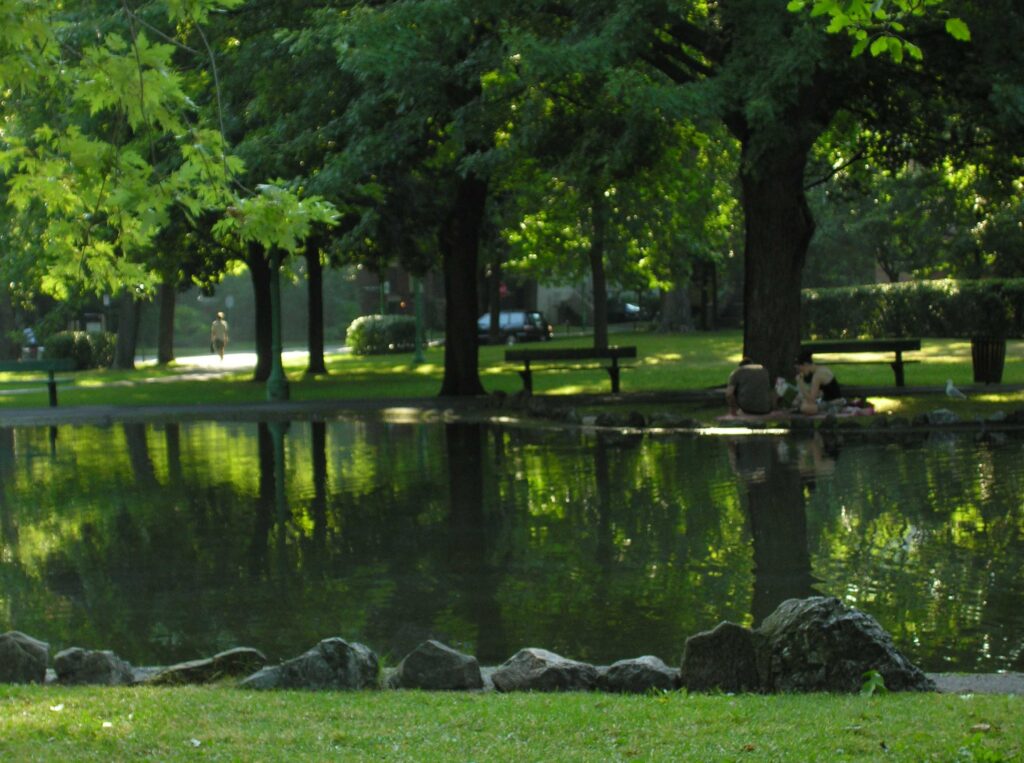
Paris is a city of focus in The Walkable City which you wrote in 2008 and noted that “Paris, which once embraced the automobile, has realized that walkability is important to cities in the twenty-first century.” Now, 13 years later, the city is experiencing really radical change in this regard as well. What are your thoughts on how quickly walkability is being prioritized and (re) introduced into the space of the city?
Unfortunately, I haven’t been to Paris since 2014, but by all accounts, Paris is turning out to be the center of the 15-minute city universe. Great!
What I don’t know is if this move toward more active transportation is something that is happening elsewhere in France. Lyon , I know, has a bike share service, but has more hills, so perhaps it is somewhat less attractive to walkers. I suspect also that there may be a disconnect between what is happening in major centers, in smaller ones, and in communities on the periphery. A walkable city works when you have a certain level of density, whether it be in the central areas of cities begun before the automobile or in very small towns. There are major differences between making an old, compact city walkable, and building for walkability. The former is in some sense easier to do because the basic “bones” of a walkable city are there. What is needed is public transport to get people into the city, and disincentives to bringing cars into them.
In-between places are the problematic ones. Suburban sprawl in North America is a particular problem. Developments built between, say, 1960 and 2010, are much harder to make walkable. What is more, the removal/retirement of trains and trolleys in peripheral regions has encouraged reliance on the automobile.
The Gilets jaunes movement in France, by the way, is an example of how not to convince people to give up the automobile. Most of the protesters were opposed to fuel price increases instituted as a way to tax carbon, for at least two reasons. They were from small towns without public transport and, after being told that diesel was the best choice, had recently learned that diesel vehicles were going to be phased out because of pollution. A cardinal rule must be: a carbon tax should be revenue-neutral, that is the folks who pay it should get something tangible back. Portugal did that and protest was very limited.
“A walkable city works when you have a certain level of density, whether it be in the central areas of cities begun before the automobile or in very small towns. There are major differences between making an old, compact city walkable, and building for walkability. The former is in some sense easier to do because the basic “bones” of a walkable city are there. What is needed is public transport to get people into the city, and disincentives to bringing cars into them.”
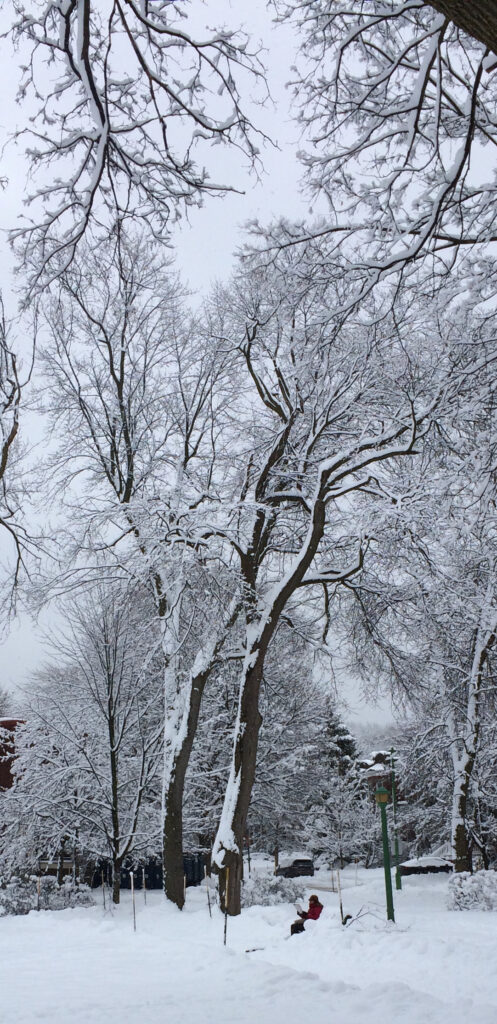
You note that “The importance of walking, biking, taking public transport, and insisting that our politicians make it easier for us to do so cannot be under-estimated.” What is the political climate like in your city and region on these issues?
Montreal is on an island, with one city government covering most of the territory since an amalgamation of a number of smaller cities 20 years ago; 14 smaller municipalities remain independent. Montreal itself is divided into 19 boroughs, several of which reflect the boundaries of the earlier, smaller towns. A half dozen more were carved from the original city in order to give better representation to the population. Voters just re-elected a mayor and city council majority from a party that made active transport a priority for its first four-year mandate. Before that, the party was an active and effective critic on behalf of active transport and controlled several boroughs where it instituted many pro-walking, pro-biking measures. Some were better considered than others–one to stop car traffic over Mount Royal was extremely unpopular and subsequently dropped–but the people who live in the neighborhoods with bike paths and traffic calming measures seem satisfied. At least, in nearly all cases party members were re-elected with comfortable majorities.
The success of this approach is particularly evident in the center of the city, where neighborhoods are relatively dense. Historically the pattern there was generally low-rise, with many attached single-family, duplex and triplex buildings, and very few high rises. In a framework like that, active transport and decent public transit are relatively easy to promote. It helps, too that the city is served by a Metro system, that links the north and south shores to the main city, with a new elevated light rail system in the works.
Farther out, however, in neighborhoods developed in the second half of the 20th century, the pattern is different. In the usual North American pattern, the suburbs are not poor as they are in many European cities. They are where you’ll find far more single-family houses on large lots and, until recently, quite inefficient public transport. Here some borough councils (and councils in the remaining small cities) have set up leisure bike trails, but most shopping is done in malls, small or big, which are practically impossible to access by foot and only marginally less so by bike.
All this emphasizes the importance of promoting densification around transit hubs in future development. You can’t make a walkable city easily where the distances to be travelled are too great.
Off the island of Montreal, this kind of development has not been favored, and with rare exceptions where development was grafted onto a small town core, the walkable city doesn’t exist at the moment. Quebec City, the provincial capital, is partly an exception. The center city, which dates to the early 17th century, is a walkable jewel, but suburbs have been grafted on it that are very car-centered. A current project to dig a tunnel under the St. Lawrence river to ease access to the suburbs on the south shore (there are already two bridges) would be an environmental and climate change nightmare. The projected budget is $10 bill CDN, and the money could be spent much more wisely elsewhere.
“Perhaps it’s exaggerating to ascribe better behavior to walkable city dwellers, but there is one overwhelmingly important point to make about the walkable city: it worked for thousands of years, and there is no reason why it won’t work again as we wake up to realize that we should change the way we’re living before we are forced to.“
FROM THE WALKABLE CITY, BY MARY SODERSTROM
What developments in public transit have you seen in your community (and metro region) over the years? What further developments would you like to see?
The Montreal region is served by a Metro line that opened 50 years ago and which has expanded somewhat since. As mentioned earlier a light rail line going west and south from the city center is scheduled to open in a couple of years, with another one planned to go east. How much good this will do remains to be seen, because it’s not clear if there will be dense enough population along the lines to warrant frequent service or to make economic sense.
Currently, the Number One public transit priority should be increasing financing in order to avoid cuts which many systems are threatening to institute to fill the budget gap brought on by lower ridership due to the Covid-19. Cuts to service must be avoided in order to maintain/regain ridership.
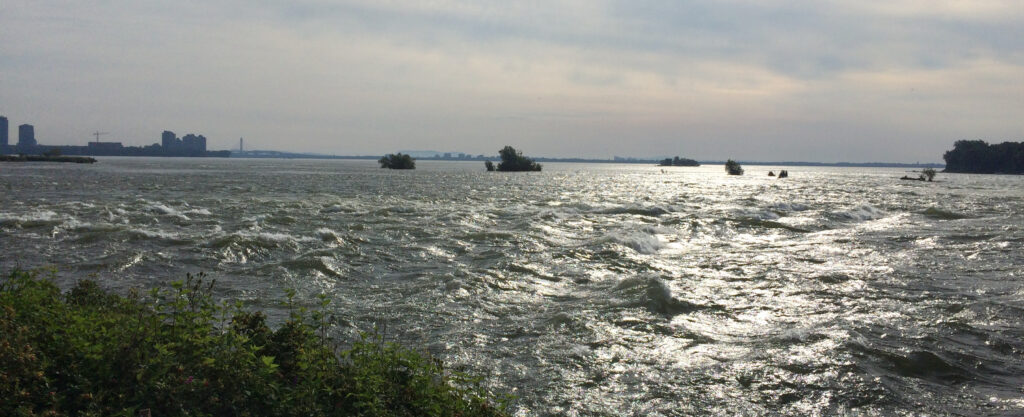
What are your favorite parks in your city?
My favorite parks are mostly small ones, tucked into cities where they are used by folks in the neighborhood. But larger, nature parks are also good. I particularly like Mount Royal Park in the center of Montreal, and the Lachine Rapids park, which is located at the point where navigation becomes nearly impossible on the St. Lawrence. The name of the latter comes from an ironic remark from one of the early explorers who was searching for a way to the riches of the Orient and who thought possibly they might be just beyond the rapids.
Urban cemeteries are also great places to walk, particularly those which
were first established just outside 19th-century city centers. They
have become “parks without the people,” surrounded by cities that have
grown up around them, as Rebecca Greenfield wrote in the Atlantic
Monthly in 2011. In Montreal, three cemeteries share Mount Royal with
public parks, and people use them as public green spaces today.
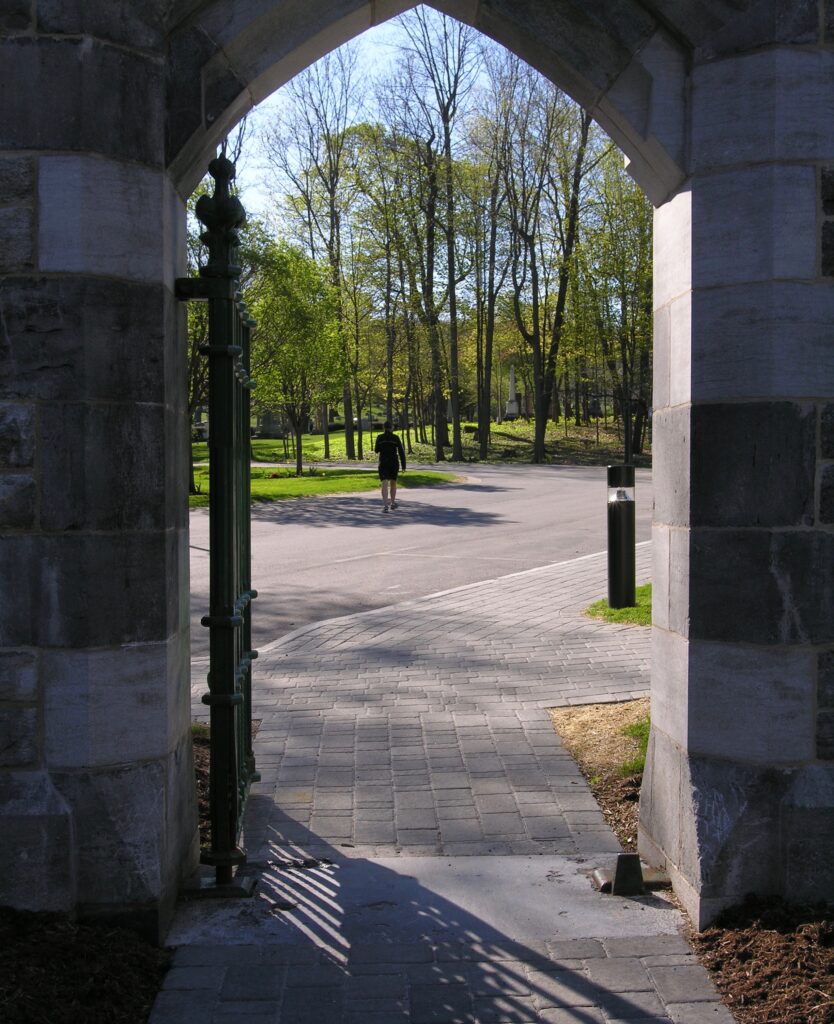
There’s a photo of the house you and your husband bought in the center of the city at the end of the book. Are you still there? How has the walkable factor has influenced your quality of life and community connectivity over the years?
Yes, we are still there, and probably will be as long (as I said in Walkable City) we can climb the stairs. My husband, a retired economist, has a furniture-making workshop in the basement which keeps him very busy, and couldn’t be replicated in any smaller place that we might be tempted to down-size into. The walkability of the neighborhood has never been more important because we can get everything we want within a 15-minute stroll: that ease of movement becomes even more important as one grows older. During the Plague Year 2020 we even didn’t drive our car enough to keep the battery charged.
One of the upsides of Covid-19, by the way, seems to be a greater number of people walking places. Part of that was due to restrictions on movement for several months, but also I think people began to see just what a pleasure walking can be. Our borough parks have never been as well-used, and after a few hesitations, the borough council caught the spirit. They put picnic tables where there hadn’t been any, increased trash pick-ups because people started eating outside as soon as they could, and actually turned three blocks of a shopping street into a pedestrian space with more tables, and street furniture. This was done in other boroughs and probably will become a permanent fixture of Montreal life.
You note in The Walkable City that “…the unofficial Quebec anthem is a song called “mon pays, c’est l’hiver”- my country is winter.” At Pedestrian Space we like to think about the “culture of walkability” as well which includes dimensions of climate and behavior through the seasons. What is your perception on the local culture of walkability through the seasons?
People continue to walk here all winter, but the biggest problem is making sure that the sidewalks are cleared of ice. The authorities are pretty good about getting paths plowed, but underneath the footing can be treacherous, particularly if there is a bit of a thaw in the day and a freeze at night. Strap-on cleats have been a big seller for several years.
There also are a sizeable number of people who proudly bike all winter, even though the bike share service, Bixi, only runs from mid-April to mid-November. My daughter is one of them, and I must admit that one of the advantages of her working from home these last many months, is that I don’t have to worry about her biking on icy sidewalks. Bike paths are routinely plowed in most boroughs, I believe, but still…
You end Chapter 3 with the question: “What are the lessons that might be used to make our cities strong and walkable in the coming century.” This is, I feel, one of the most radical but also common sense issues of the century. Radical because we are still faced with car-dominance in so many urban areas and communities around the world and common sense because, as many of us know, making our cities stronger and more walkable is also making them more sustainable. What are your thoughts on the path ahead?
Unfortunately, I’m becoming more pessimistic about our ability to change before we are forced to. The research I’ve done over the last couple of years about climate change and rising sea levels suggests strongly that we’re going to have retreat from the waters’ edges and learn how to live with weather drama because the glaciers are already melting with all that implies. That doesn’t mean, however, we shouldn’t all individually do what we can to cut down on our carbon footprints. One of our biggest tasks is to counter the growing post-pandemic tendency to spread out, to avoid contact with people, to stay in cars because doing that is “safer.” Walkable cities will help, and certainly, they are much more pleasant to live in.
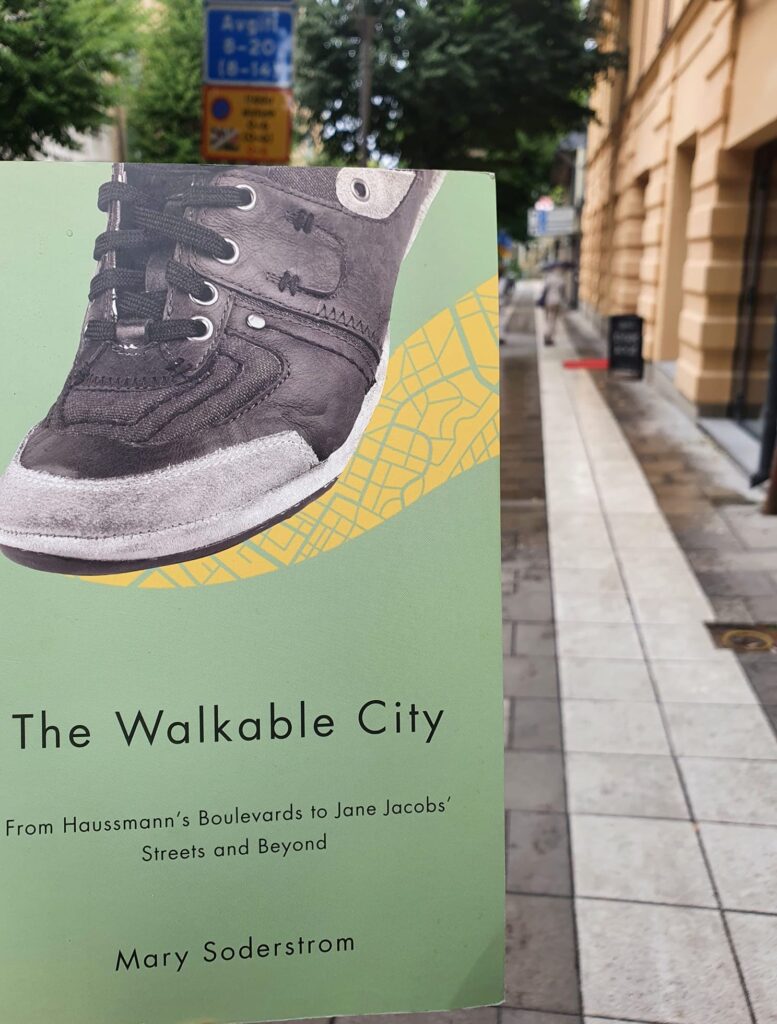
Last year your book ‘Concrete: From Ancient Origins to a Problematic Future‘ was published. The book is described as “A fascinating history of the carbon footprint of our concrete world–from ancient Roman architecture to urban cityscapes–and the trouble it spells for sustainability amidst rapid climate change.” Can you share a bit of background on how you came to this topic and what compelled you to research and write about it?
Well, I like to think that there’s a line connecting most of my non-fiction. I started out with a book about botanical gardens–Recreating Eden: A Natural History of Botanical Gardens, (Véhicule Press , 2001) because I got interested in the flowering of natural science in 19th century Britain after writing about a Canadian doctor who studied in London in the 1820s. Then after I gave a talk about the book in Seattle. a woman came up to me and wanted to talk about her own garden. She said she and her husband had moved from the center of the city to the outskirts in order to have some space for “a real garden”. They have rhododendrons and the native plants artfully arranged on a hillside, she said. The bushes and trees are planted so that even when mature they won’t block the view of the mountains on fine days. She was very pleased with what they’ve done, although, she added, it means that both she and her husband have to spend hours in their cars for their commutes to work.
That night, something clicked in my head as I drove back through the city on a crowded eight-lane freeway, speeding past kilometer after kilometer of housing developments. It is a landscape I know well, as do most North Americans—half of the population of the United States and substantially more than a third of Canada’s live in suburbs. It is also a landscape that represents a paradox, I realized as I drove, a Green Paradox. So many people love gardens and greenery, but when each of us tries to claim a little bit for our very own, we end up paving over nature.
Several questions rose like specters in the dark. Is today’s Green Paradox confined to the privileged middle-classes of North America? What is happening in the developing world? Can a Megacity be green? And—the toughest question of all—what are the implications for the future of wanting something but trying to get it in ways that endanger the very essence of what we want?
The result after three years of research and reflection was Green City: People, Nature and Urban Places (Véhicule Press, 2006) In it I looked at ten cities from Babylon to São Paulo, Brazil to see how people integrated nature into their urban lives, both formally and informally. One of the things I realized as I worked that project was that the greenest cities these days are also the most walkable, hence The Walkable City.
But I wasn’t done there. This time, as I thought about streets and roads, I saw that roads are vectors for change and exchange, the most enduring monuments we have built. In the last century and a half their proliferation and their transformation from simple routes for pedestrian or animal traffic to motorways have had disastrous effects on the environment, our consumption of resources, and our health. To explore this, I wrote Road through Time: The Story of Humanity on the Move (University of Regina Press, 2017)
And, of course, who says roads, says concrete: the next logical step was to write about that ubiquitous, useful, and dangerous material. Concrete: From Ancient Origins to a Problematic Future (University of Regina Press, 2020) was the result. The logical follow-up to that, given concrete’s role in climate change, will be Against the Seas: Saving Civilizations from Rising Waters (forthcoming in 2023 from Dundurn Books.)
For each of the books, I did some traveling, and frequently I’ve retraced my steps or dug deeper into my notes in order to understand what I’d seen in the past through the lens of what I was working on at the moment.

Mary Soderstrom writes fiction and non-fiction. Against the Seas: Saving Civilizations from Rising Waters is her 18th book and is the logical follow-up to her last, Concrete: From Ancient Origins to a Problematic Future. She has traveled widely, but her home base is Montreal.
In addition, she has published four other works of non-fiction, three short story collections, six novels and one children’s book. Over the years she also has done a wide variety of reporting on science, urbanism, politics and writing.
View Mary’s books at Véhicule Press , University of Regina Press and Dundurn Press.

